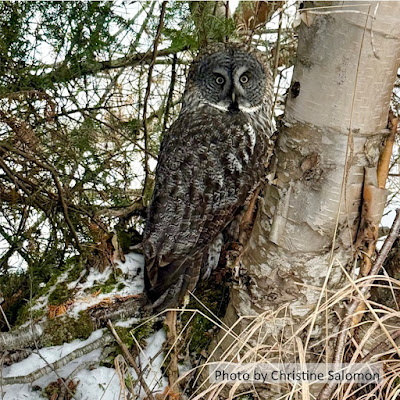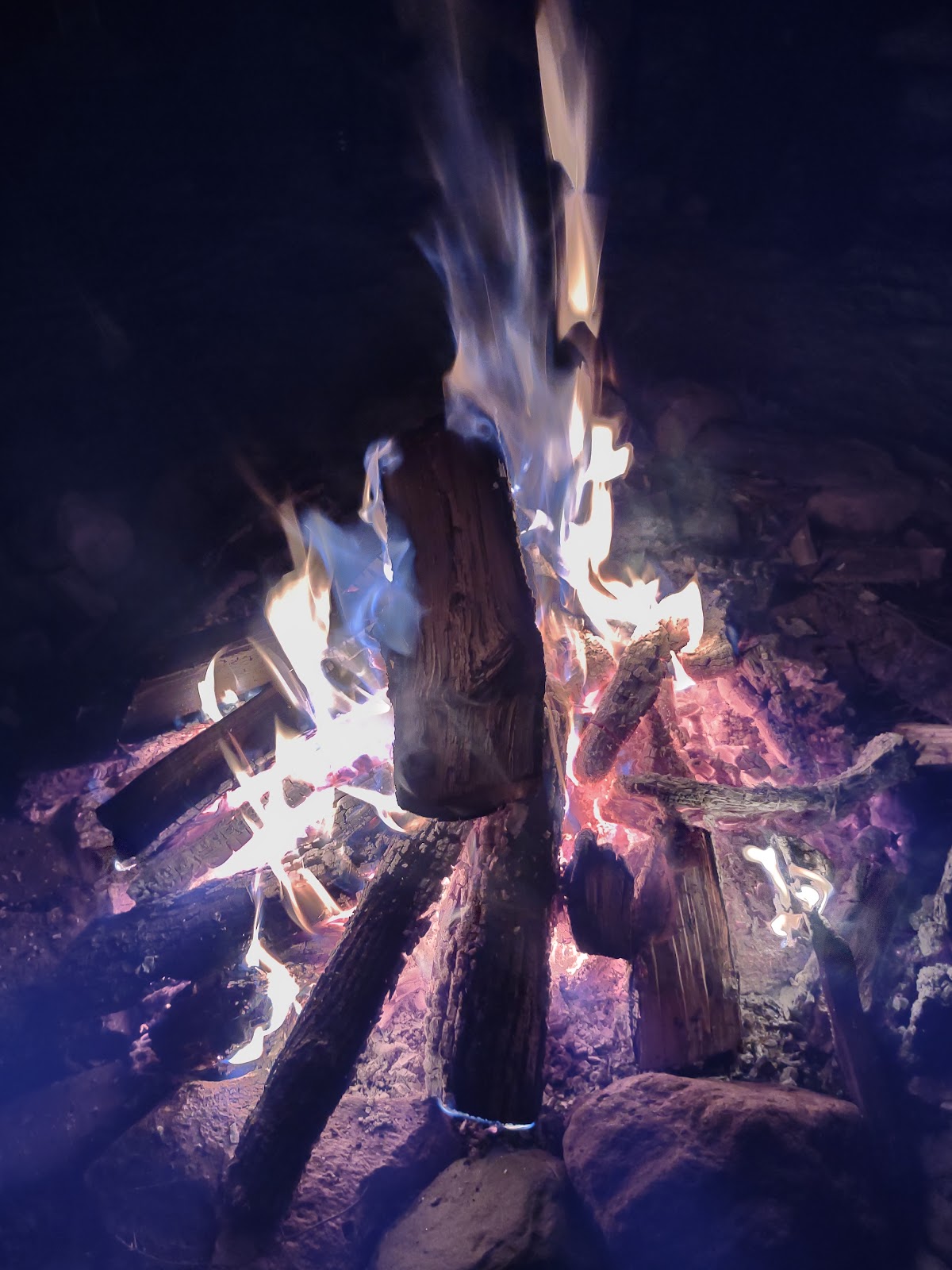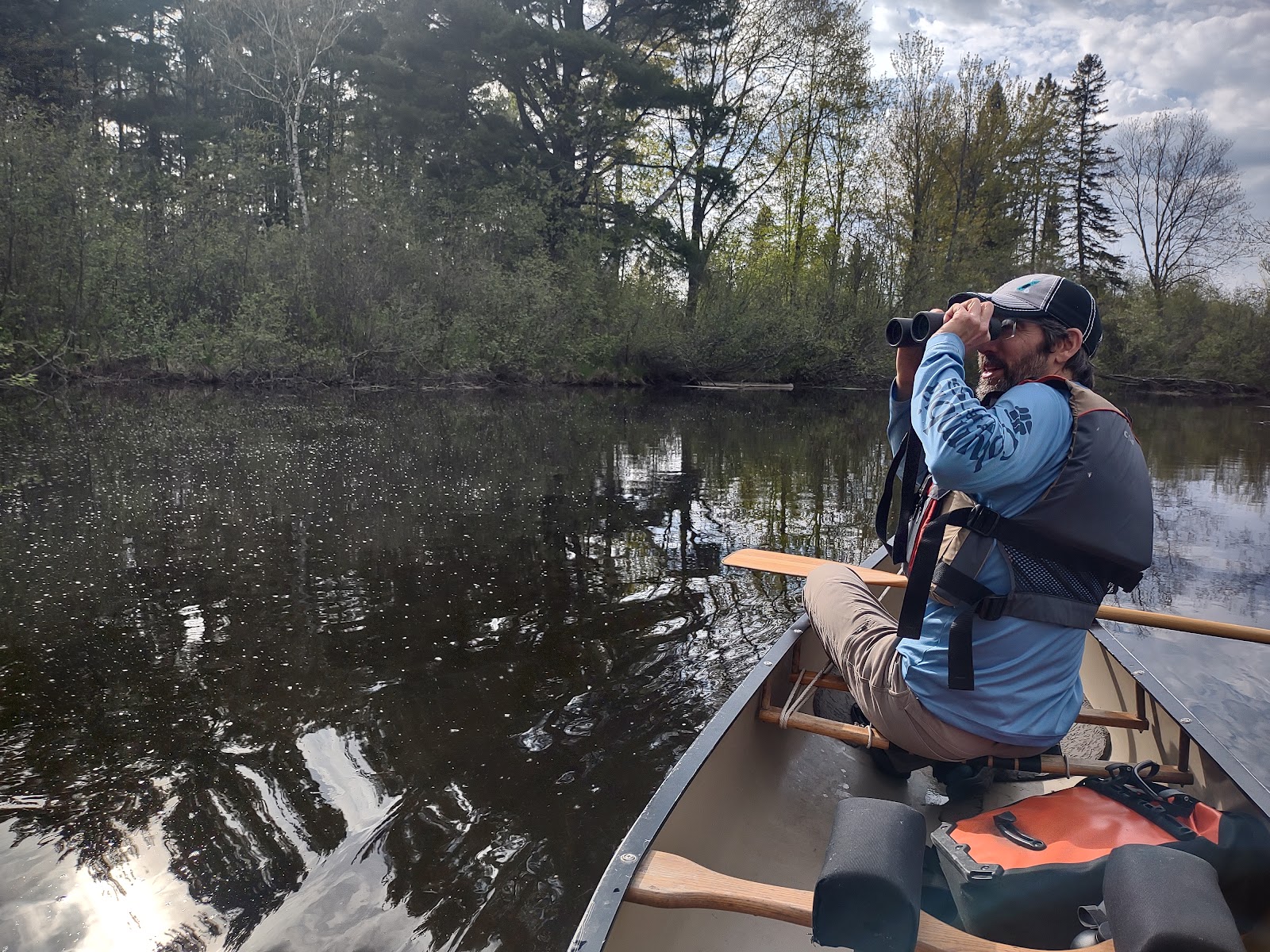Lake Superior is not a hot spring, of course, but with air temperatures dropping to -17 degrees Fahrenheit overnight, and warming up to -8 when we were walking along the shore in mid-afternoon, even water at 37 degrees was warm enough to steam.
Sea smoke forms from humid air just above the lake surface. I think of evaporation as something that happens in summer, but winter is when the lake experiences the greatest rates of evaporation, due to the stark contrast in the temperature of the air and the water. When the humid air comes in contact with an icy breeze, the air cools, loses its ability to hold all the water vapor, and the water vapor condenses into a fog of ice crystals.
Lake water had also formed ice on the rocks near shore, and we circumnavigated Artist’s Point to admire Nature’s sculptures. Thick mittens kept my hands from freezing, while my face was protected by both a scarf and the hood of my fluffy down jacket. I’d pulled on a thick skirt over my ski pants for an extra layer of wind protection. And still, whenever the breeze wiggled its way inside a layer and brushed my skin, I felt the bite of cold.
All the while, a small flock of mallard ducks bobbed on the waves in East Bay, behind the protective curve of Artist’s Point in Lake Superior. Shouldn’t they be somewhere warm? As we watched, the flock paddled toward the shore and settled in among the ice-draped rocks along the shoreline. Some dipped their bills into the shallow water, likely finding some remnants of aquatic plants to eat. Others stood on submerged rocks and preened their feathers. Both the oils they secrete and the structure of their feathers keep the cold lake out of their warm down insultation. They probably have less trouble maintaining their 100-degree body temperature than I do my 98 degrees.
 |
| Sea smoke rises of the relatively warm water of Lake Superior while a flock of mallard ducks preens among ice-covered shoreline of Artist’s Point in Grand Marais, Minn. Photo by Kevin Friedman. |
My friend and I had lasted longer than I’d expected out there, but as the north wind found us, my resolve wore out. “Race to the car?” I grinned with stiff cheeks. We were just south of the Grand Marais city limits by the time the car warmed up.
At the crest of a hill, something large swooped across the highway in front of us and several feet above the car. The blunt face and tapered silhouette were unmistakable characteristics of a Great Gray Owl—my first one in the wild! It seems strange to say, but the owl looked like they were flying silently. Of all the owls, Great Grays have the longest fringes on the leading edges of their wings and the thickest layer of fuzz on their flight feathers. Together, these adaptations reduce wing noise to almost nothing.
 |
| Great Gray owl in flight. Photo by By Arne List - https://www.flickr.com/photos/arne-list/2363789109/, CC BY-SA 2.0, https://commons.wikimedia.org/w/index.php?curid=16987237 |
We tracked the path of the large bird as they maneuvered through a grove of trees on the far side of the road but lost them behind some spruce boughs. Beyond slender aspen trunks, we could see a strip of open ground and the metal sheds of a storage facility. Owls and other raptors often prefer to perch at the edge of an open area to hunt.
The road was clear and wide, so we “flipped a Louie” and parked on the opposite shoulder. This move, and my family’s term for it, always reminds me of my photographer father, who flipped many Louies to photograph hawks on fence posts during my childhood in Iowa. I knew he’d be jealous of this sighting! With just a slight change in perspective, we could see the shape of the owl on the far side of the trees, their posture hunched forward in hunting mode.
Great Gray Owls have come south from Canada to eat a share of our mice and voles. Since they live at latitudes where days and nights take turns being long, they don’t have the strong preference for night that our Barred and Great Horned Owls do. Great Grays’ excellent hearing can pinpoint mice in the dark, or the day, and even under the snow. This year, however, the snow in many places is too hard for them to punch through, even with strong talons. Plus they don't like to cross open water. The owls have congregated along the shore of Lake Superior where the warmth of the water has kept the snow cover more sparse.
Just a few miles down the road, a truck on the shoulder with a camera lens sticking out the window made us suspicious. Sure enough, a second Great Gray flew directly toward us, but high over the road. When I’d helped rescue an injured Great Gray on Christmas Day, I’d only seen their yellow eyes inside the protective box. Now, big yellow eyes stared right at me from above.
This day may have been bitter cold, but that made the beauty in it all the more sweet.
Emily’s award-winning second book, Natural Connections: Dreaming of an Elfin Skimmer, is available to purchase at www.cablemuseum.org/books and at your local independent bookstore, too.
For more than 50 years, the Cable Natural History Museum has served to connect you to the Northwoods. The Museum is open with our brand-new exhibit: “Anaamaagon: Under the Snow.” Our Winter Calendar is open for registration! Follow us on Facebook, Instagram, YouTube, and cablemuseum.org to see what we are up to.












.JPG)